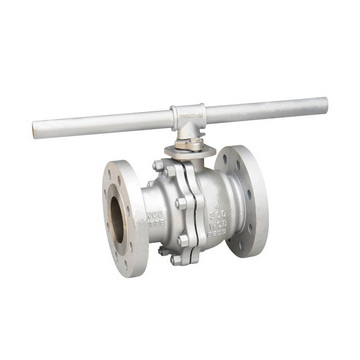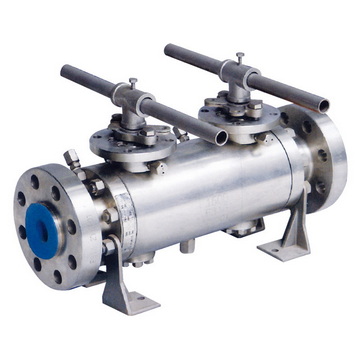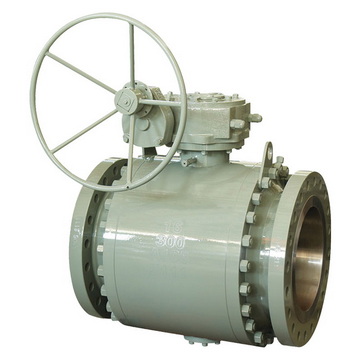Best Ball Valve Seat Materials for Corrosive Environments
Content Menu
● Ball valve seat fundamentals
● Common seat materials and their corrosion performance
>> UHMW-PE and other thermoplastics
>> PTFE blends and filled materials
>> Acetal, FKM, and elastomeric seats
>> Specialty seats for highly aggressive media
● Operating conditions and material selection by corrosive medium
● Installation, maintenance, and life expectancy considerations
● Design and testing considerations for OEMs
● Assembly recommendations for high-corrosion environments
● Operational best practices and lifecycle management
● FAQ
>> 1. What factors determine the best Ball valve seat material for a given corrosive environment?
>> 2. How does temperature affect Ball valve seat material selection?
>> 3. Can PTFE seats withstand aggressive acids or chlorides, and when should alternatives be used?
>> 4. What are the advantages of PEEK seats in high-temperature applications?
>> 5. How to assess wear life and replacement intervals for different seat materials?
Introduction
In industrial processes that handle corrosive media, the integrity of the sealing system in ball valves is a decisive factor for reliability, safety, and total cost of ownership. The Ball valve seat plays a pivotal role in establishing a leak-tight barrier between the rotating ball and the fixed body, while also withstanding chemical attack, thermal cycling, and mechanical wear. For manufacturers serving oil and gas, seawater desalination, and offshore drilling platforms, selecting the right Ball valve seat material is not merely a matter of chemical compatibility; it is a complex optimization across temperature, pressure, flow velocity, and maintenance regimes. This article provides a comprehensive guide to the best Ball valve seat materials for corrosive environments, drawing on current industry practices, material science considerations, and practical OEM perspectives. The discussion covers widely used materials, advanced composites, and practical decision-making frameworks to help brand owners and distributors choose seats that balance longevity, performance, and total cost.

Ball valve seat fundamentals
The Ball valve seat is the soft, often polymeric seal that interfaces with the spherical valve plug. In floating, trunnion, and top-entry valve designs, the seat geometry and material selection influence sealing force distribution, stem loading, and resistance to extrusion under pressure. Softer seating materials typically excel in low-leakage performance and wipe-clean sealing, while harder seats contribute to extended wear resistance in high-velocity or abrasive service. A well-chosen Ball valve seat material interacts with the ball material, the stem packing, and the gland design to form a compatible seal system that counters thermal expansion, pressure surges, and chemical attack. For OEM projects, understanding these interactions enables precise tailoring of seat assemblies to specific process streams and regulatory requirements.
Common seat materials and their corrosion performance
PTFE-based seats
Polytetrafluoroethylene (PTFE) remains one of the most versatile seat materials owing to its chemical inertness, wide temperature tolerance, and low friction. PTFE seats provide excellent resistance to strong acids and bases, chlorine species, and many organic solvents. However, PTFE can suffer from creep and cold flow under sustained high temperatures and pressures, leading to gradual deformation and potential leakage in long-running cycles. To mitigate this, filled PTFE compositions—where PTFE is reinforced with fillers such as glass, carbon, or bronze—improve dimensional stability and wear resistance while preserving chemical resilience. For OEM applications in corrosive environments, PTFE-based seats are often favored for mid-range temperature services and where processing fluids are well within PTFE's stability window.PTFE-based seats excel in chemical inertness and broad compatibility, making them suitable for many aggressive chemical streams; however, designers should account for potential creep in high-temperature, long-duration service, especially if the seat area experiences sustained compressive loads or extrusion forces.
PEEK-based seats
Polyether ether ketone (PEEK) offers high mechanical strength, excellent chemical resistance, and good dimensional stability under elevated temperatures. PEEK seats maintain structural integrity in higher-temperature environments where PTFE may begin to soften or creep. In demanding corrosive service, PEEK can outperform PTFE in wear resistance and load-bearing capacity, providing longer service life in high-pressure regimes. In OEM contexts, PEEK seats are particularly attractive for applications with aggressive media at elevated temperatures or where stringent leakage performance is required over extended cycles. PEEK's stiffness, however, can translate into higher sealing torque requirements and the need for compatible gland designs to accommodate different thermal expansion characteristics. For highly corrosive media that also impose aggressive mechanical wear, PEEK seats offer a robust balance of seal performance and durability.
UHMW-PE and other thermoplastics
Ultra-high-molecular-weight polyethylene (UHMW-PE) provides exceptional abrasion resistance and impact resistance, along with good chemical compatibility for many solvents and mild acids. Its lower modulus compared with PTFE and PEEK means more forgiving behavior under dynamic seating conditions, yet UHMW-PE may not be suitable for extreme temperatures or aggressive chemical environments. In OEM configurations for remotely located operations or water treatment domains where moderate corrosion resistance is sufficient, UHMW-PE seats can deliver cost-effective, durable performance. Other thermoplastics such as acetal (Delrin) offer favorable dimensional stability and low friction but may exhibit reduced chemical resistance to certain solvents; these materials can be advantageous in specific service regimes where process conditions are modest.
PTFE blends and filled materials
Many commercial seats use PTFE blends that combine the chemical inertness of PTFE with reinforced structural properties. Fillers can include carbon, bronze, graphite, or glass, each chosen to tailor wear resistance, extrusion resistance, and thermal performance. In corrosive service, PTFE blends often provide a universal solution when the process stream contains mixed chemicals or fluctuating temperatures, delivering a stable seal through a broad operating envelope. The OEM perspective emphasizes choosing blends with proven compatibility to the intended process chemistry, while maintaining manufacturability and reliable stock availability.
Acetal, FKM, and elastomeric seats
For less aggressive corrosive environments or for cost-sensitive segments, acetal-based seats or elastomeric seats such as FKM/FFKM (fluoroelastomer) can be employed. Acetal offers dimensional stability and decent wear characteristics but can be more susceptible to hydrolysis or solvent attack in certain chemical regimes. Elastomeric seats provide strong initial sealing and easy seating behavior, but their chemical resistance is highly dependent on the exact elastomer formulation. In high-chloride or high-temperature service, careful material selection and perhaps a transition to fluorinated elastomer variants may be necessary to preserve seal integrity and reduce swelling or degradation.
Specialty seats for highly aggressive media
In some industry segments, such as offshore oil and gas processing, seawater desalination, and chemical processing plants, specialty seats may be required to withstand aggressive constituents like hot concentrated acids, caustics, elevated salinity, and thermal cycling. Materials such as PCTFE, PFA, or fluorinated elastomer compounds can offer enhanced chemical resistance and better long-term stability under extreme conditions. For OEM programs that target critical service environments, adopting a multi-material seat strategy—where different seat zones or insert materials are used within a single valve—can optimize performance across varying process sections and phases.
Operating conditions and material selection by corrosive medium
Corrosive environments vary widely in chemical composition, temperature, and pressure. The selection framework should consider:
- Temperature range: high-temperature services favor materials with superior thermal stability (e.g., PEEK, PTFE blends) to minimize creep and softening.
- Pressure and flow: high-pressure and high-velocity streams demand materials with good extrusion resistance and low permeability while preserving seal integrity.
- Chemical compatibility: aggressive acids, alkalis, chlorides, or oxidizing agents require materials that resist chemical attack without rapid degradation.
- Mechanical wear: abrasive or particulate-laden fluids necessitate seat materials with strong wear resistance or reinforced structures.
- Regulatory and safety considerations: some applications require materials with specific certifications (e.g., FDA, USP, or nuclear-grade standards), which may constrain material choices.

Installation, maintenance, and life expectancy considerations
The longevity of a Ball valve seat in corrosive service depends not only on the intrinsic material properties but also on installation quality, operating discipline, and maintenance practices. Correct seating procedures, appropriate gland torque, and consistent process conditions help minimize extrusion of the seat and reduce seal degradation. Regular inspection programs, compatible cleaning procedures, and controlled start-up/shutdown sequences can dramatically extend seat life. In OEM deployments, incorporating service-friendly design elements—such as replaceable seats or modular insert assemblies—can reduce downtime and maintenance costs, particularly in offshore or remote installations where maintenance logistics are challenging.
Design and testing considerations for OEMs
From an OEM perspective, seat material selection should integrate with the valve body materials, stem design, and actuator or manual operation characteristics. Finite element analysis and bench testing under simulated corrosive media conditions enable validation of seal performance before field deployment. In addition to chemical compatibility, dynamic tests should evaluate extrusion resistance, seat-to-ball wear, and seal stability across thermal cycles. Specifying a robust quality control protocol, including material traceability, batch testing, and vendor qualification, helps ensure consistent performance across large-scale OEM deployments.
Assembly recommendations for high-corrosion environments
During assembly, ensuring clean seating surfaces, proper alignment of seats with the ball, and appropriate lubrication practices are essential. For soft-seated designs, uniform compression without excessive stress concentrates is important to prevent premature extrusion. For hard-seated configurations, attention to mating tolerances and robust gland assemblies will help sustain performance under fluctuating temperatures and pressures. A well-documented assembly procedure reduces the risk of nicking, misalignment, or improper seating, which can compromise seal integrity in corrosive service.
Operational best practices and lifecycle management
- Proactive maintenance: schedule periodic seat inspections and replace seats before wear leads to leakage or reduced shut-off performance.
- Condition-based replacement: track service hours, operating temperatures, and exposure durations to estimate seat life and plan replacements accordingly.
- Post-maintenance validation: re-test seals after replacement to confirm leak-tight performance under expected service conditions.
- Spare part strategy: maintain an appropriate stock of commonly used seat materials and sizes to minimize downtime, especially in remote or offshore locations.
- Safety and compliance: ensure all seat materials and associated elastomers meet applicable safety and environmental regulations for the target markets.
Conclusion and engagement
Selecting the best Ball valve seat material for corrosive environments is a nuanced decision that blends chemistry, mechanics, and field experience. For OEM partners and international buyers, the value lies in a materials strategy that combines chemical compatibility with mechanical durability, enabling reliable operation across oil and gas, seawater desalination, and offshore drilling contexts. Interested readers and potential partners are invited to engage with the technical team to discuss specific media compositions, operating temperatures, pressures, and maintenance regimes to tailor a seat solution that maximizes performance, reduces lifecycle costs, and ensures regulatory compliance. A direct consultation can begin with a simple inquiry outlining the process stream, expected service life, and any certification requirements.

FAQ
1. What factors determine the best Ball valve seat material for a given corrosive environment?
The decisive factors include chemical compatibility with the process media, operating temperature and pressure, potential for abrasive wear, extrusion resistance, seating torque, and maintenance strategy. Material selection must balance corrosion resistance, mechanical durability, and compatibility with other valve components to ensure long-term reliability.
2. How does temperature affect Ball valve seat material selection?
Temperature influences material stiffness, creep resistance, and sealing performance. Higher temperatures can cause softer materials to creep or deform, reducing seal integrity over time, while very high temperatures may compromise some elastomeric components. Selecting materials with favorable high-temperature performance or using reinforced composites can mitigate these effects.
3. Can PTFE seats withstand aggressive acids or chlorides, and when should alternatives be used?
PTFE seats offer excellent chemical inertness and broad compatibility, including many acids and chlorides. However, in extremely aggressive media or where high temperature and pressure accelerate wear, alternatives such as PEEK, PTFE blends, or fluorinated polymers may provide better long-term stability and reduced creep.
4. What are the advantages of PEEK seats in high-temperature applications?
PEEK seats maintain higher mechanical strength and dimensional stability at elevated temperatures, offering superior wear resistance and longer service life in demanding corrosive environments. They can reduce replacement frequency in high-temperature service but may require compatible gland designs and precise assembly to manage sealing torque.
5. How to assess wear life and replacement intervals for different seat materials?
wear life assessment combines laboratory wear testing, field experience, and monitoring of service hours, temperature, pressure, and fluid composition. OEM partners should establish a predictive maintenance plan based on these inputs, complemented by periodic inspections and leak testing to determine optimal replacement intervals.
Hot tags: Best Ball Valve Seat Materials, Corrosive Environment Ball Valve, Ball Valve Seat Material Selection, Durable Ball Valve Seats, Corrosion-Resistant Valve Seats, Materials for Ball Valve Seats, Best Materials for Valves, Ball Valve Seats for Harsh Environments, Chemical Resistant Ball Valve Seats, High-Performance Valve Seat Materials